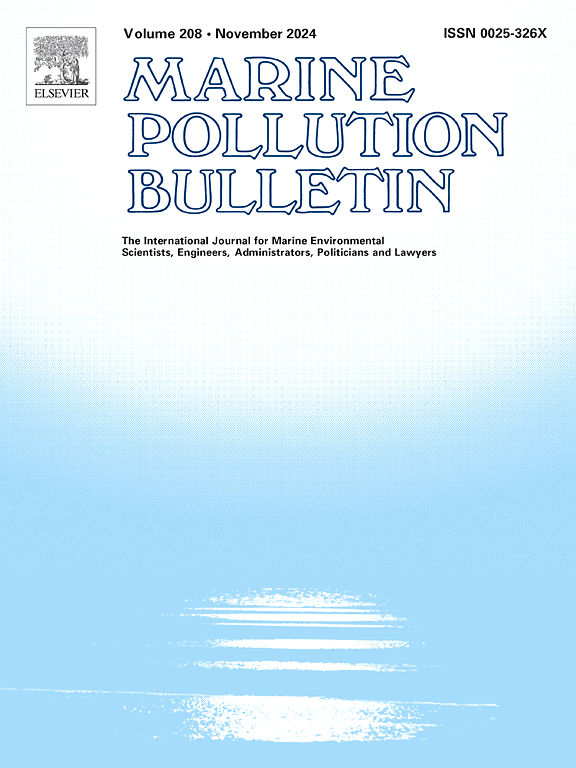Sources, transport and fate of polycyclic aromatic hydrocarbons (PAHs) in a typical river-estuary system in the North China: From a new perspective of PAHs loading
IF 5.3
3区 环境科学与生态学
Q1 ENVIRONMENTAL SCIENCES
引用次数: 0
Abstract
Sediment particles and organic carbon regulate the transport and burial of polycyclic aromatic hydrocarbons (PAHs) in the suspended particle matter (SPM) of rivers and estuarine sediments. In this study, we assessed the source, biological and health risks of the PAHs, and examined the riverine transport and burial of PAHs based on their spatial distributions and sediment surface area (SSA) in river SPM and estuarine sediments in the North China. The results showed that the river SPM was dominated by low molecular weight PAHs (LMW, 2–3 rings; 59.3 %), while the river and estuarine sediments were dominated by high molecular weight PAHs (HMW, 4–6 rings; river sediments: 70.8 % and estuarine sediments: 72.2 %) due to the degradation of LMW PAHs during transport. Quantitative estimation using principal component analysis-multiple linear regression (PCA-MLR) revealed mixed combustion of petroleum and coal to be the dominant PAH source (river samples: 67.9 % and estuary samples: 85 %). The results based on the Incremental Lifetime Cancer Risk (ILCR) model indicated that the values of dermal contact were higher than 10−6, suggesting that there were potential carcinogenic health risks. Using PAHs loading (PAHs normalized to SSA), we estimated the burial efficiency of HMW PAHs (89.1 %) to be significantly higher than that of LMW PAHs (17.8 %) in the river SPM. These findings could provide new insights into the fate of contaminants in coastal sediments, and our results provide data support and theoretical basis for the ecological and environmental protection and policy formulation for river-estuary system.
求助全文
约1分钟内获得全文
求助全文
来源期刊

Marine pollution bulletin
环境科学-海洋与淡水生物学
CiteScore
10.20
自引率
15.50%
发文量
1077
审稿时长
68 days
期刊介绍:
Marine Pollution Bulletin is concerned with the rational use of maritime and marine resources in estuaries, the seas and oceans, as well as with documenting marine pollution and introducing new forms of measurement and analysis. A wide range of topics are discussed as news, comment, reviews and research reports, not only on effluent disposal and pollution control, but also on the management, economic aspects and protection of the marine environment in general.
 求助内容:
求助内容: 应助结果提醒方式:
应助结果提醒方式:


